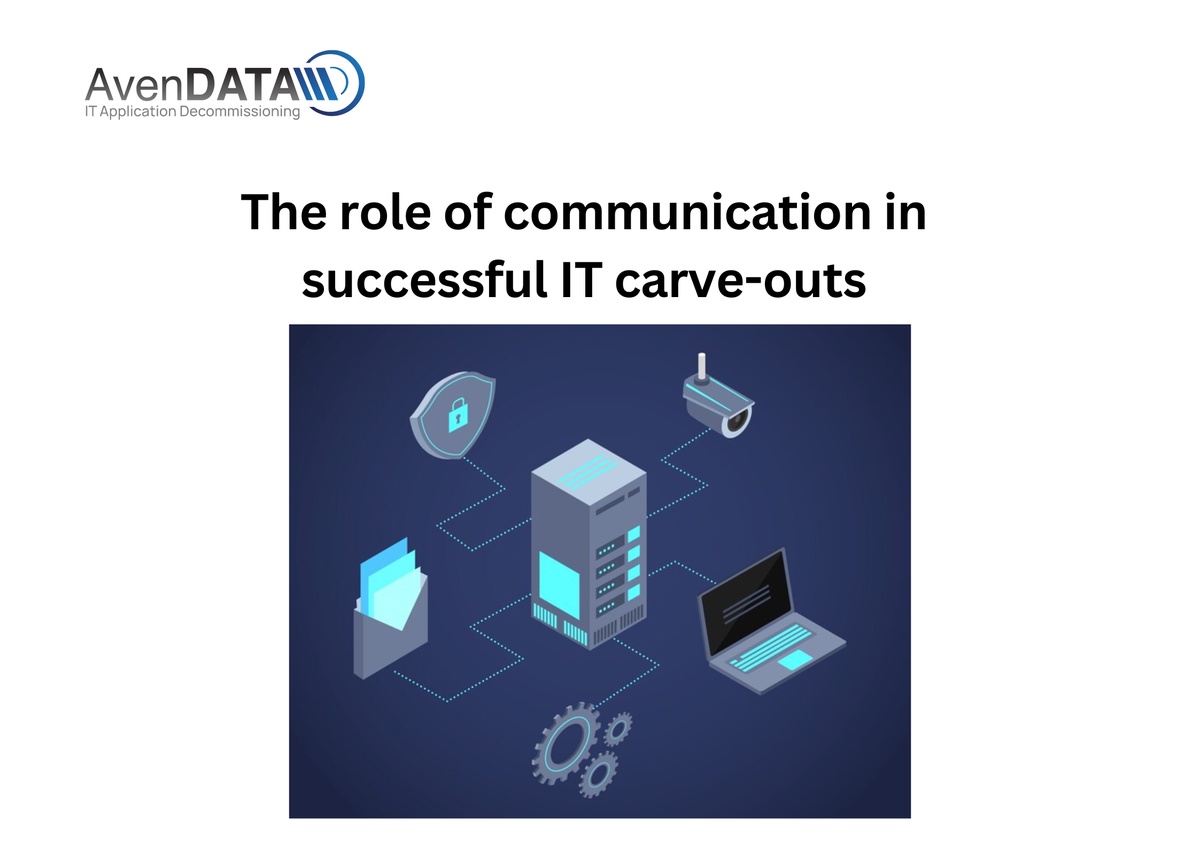In the dynamic landscape of business transformations, IT carve-outs have become increasingly common as organizations seek to optimize operations, drive efficiency, and unlock value. However, the success of these carve-outs hinges not only on strategic planning and technical expertise but also on effective communication. In this blog, we’ll explore the critical role of communication in ensuring the success of IT carve-outs and how organizations can leverage communication strategies to navigate the complexities of this process with confidence.
Introduction: Understanding IT Carve-Outs
Before delving into the role of communication, let’s first define what we mean by IT carve-outs. An IT carve-out refers to the process of separating a portion of an organization’s IT infrastructure, systems, or services to create a standalone entity. This could involve spinning off a division, selling a subsidiary, or outsourcing specific IT functions. While IT carve-outs offer significant benefits such as increased agility and cost savings, they also pose unique challenges that require effective communication to overcome.
1. Setting Clear Objectives and Expectations
Effective communication begins with setting clear objectives and expectations for the IT carve-out. This involves defining the scope of the carve-out, outlining key deliverables, and establishing timelines and milestones. By clearly articulating the goals and objectives of the carve-out to all stakeholders, organizations can ensure alignment and understanding across the board, laying the foundation for a successful transition.
2. Engaging Stakeholders Early and Often
Stakeholder engagement is crucial throughout the IT carve-out process, from initial planning stages to post-implementation support. This includes engaging with internal stakeholders such as employees, executives, and IT teams, as well as external stakeholders such as customers, vendors, and regulatory bodies. By involving stakeholders early and often, organizations can gather valuable input, address concerns, and build buy-in for the carve-out initiative, increasing the likelihood of success.
3. Transparent Communication
Transparency is key to building trust and credibility during IT carve-outs. Organizations must communicate openly and honestly about the reasons for the carve-out, the impact on stakeholders, and the expected outcomes. This includes providing regular updates, sharing relevant information, and addressing questions and concerns in a timely manner. Transparent communication fosters a sense of trust and collaboration among stakeholders, creating a supportive environment for the carve-out process.
4. Tailoring Communication to Different Audiences
Effective communication requires tailoring messages to different audiences based on their needs, preferences, and level of involvement in the carve-out process. This may involve using different communication channels such as emails, meetings, newsletters, and town hall sessions, as well as adapting the tone and style of communication to suit the audience. By tailoring communication to different audiences, organizations can ensure that key messages are effectively communicated and understood by all stakeholders.
5. Managing Change Effectively
IT carve-outs often involve significant changes to processes, systems, and organizational structures, which can be unsettling for stakeholders. Effective communication plays a critical role in managing change and mitigating resistance. This includes clearly communicating the rationale for the carve-out, providing support and resources to help stakeholders adapt to the changes, and addressing concerns and objections in a proactive manner. By managing change effectively, organizations can minimize disruption and ensure a smooth transition to the new IT environment.
6. Building a Culture of Collaboration
Communication is not just about conveying information — it’s also about fostering a culture of collaboration and teamwork. Organizations should encourage open dialogue, active listening, and constructive feedback among stakeholders involved in the carve-out process. By promoting a culture of collaboration, organizations can harness the collective expertise and creativity of their teams, driving innovation and problem-solving throughout the carve-out journey.
7. Celebrating Milestones and Successes
Finally, effective communication involves celebrating milestones and successes along the way. Recognizing and acknowledging the achievements of teams and individuals involved in the carve-out process boosts morale, fosters a sense of accomplishment, and reinforces commitment to the project’s goals. By celebrating milestones and successes, organizations can inspire and motivate stakeholders to continue working towards a successful outcome.
Conclusion: Harnessing the Power of Communication
In conclusion, effective communication is essential for the success of IT carve-outs. By setting clear objectives, engaging stakeholders, communicating transparently, tailoring messages to different audiences, managing change effectively, fostering collaboration, and celebrating milestones and successes, organizations can navigate the complexities of IT carve-outs with confidence and achieve their desired outcomes. Communication is not just a tool for conveying information — it’s a strategic asset that can drive alignment, build trust, and propel organizations towards success in the ever-changing landscape of business transformation.
#AvenDATA #carveout #datacarveout #sapcarveout #legacysystems #dataarchiving


No comments yet